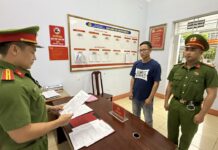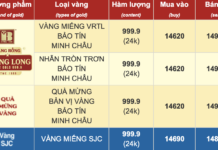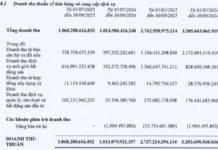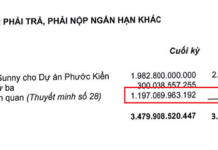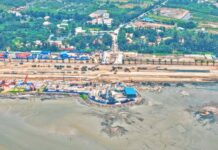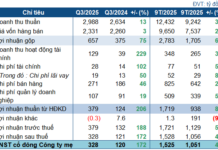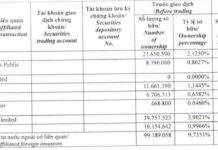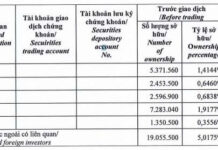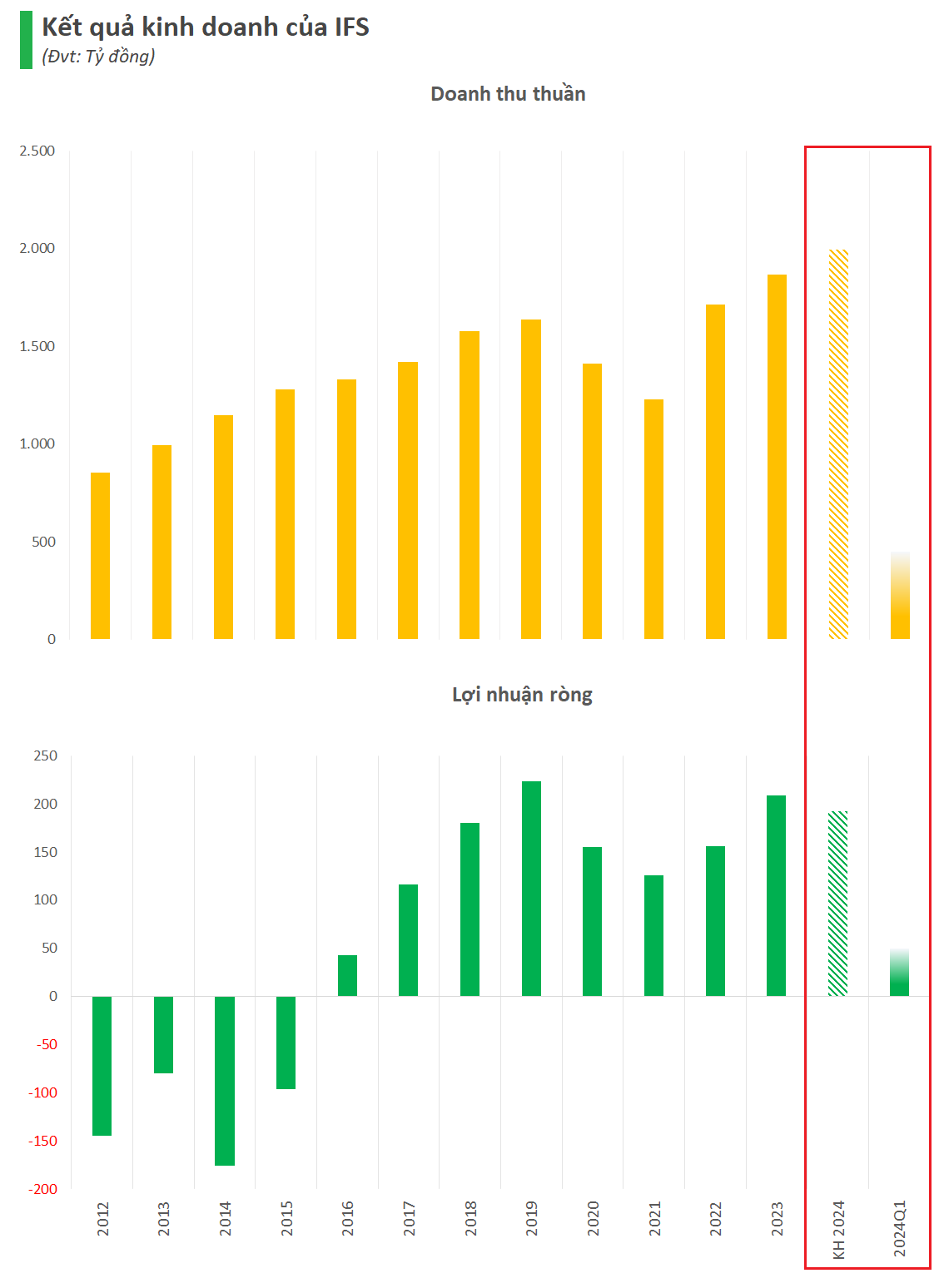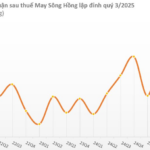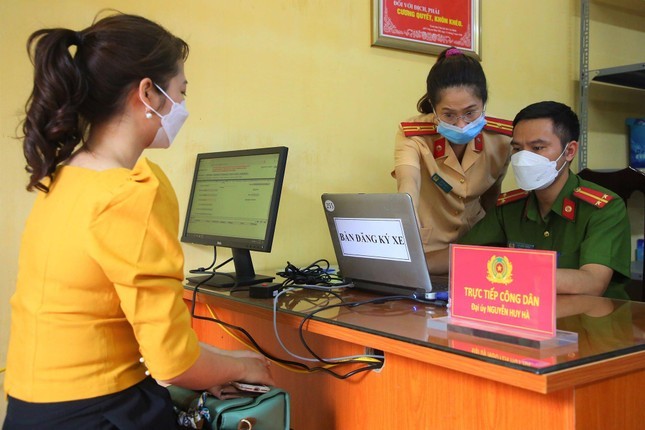
The new car registration process can now be done through the VNeID app. Illustration by Thanh Ha.
Circular No. 28/2024/TT-BCA has amended and supplemented a number of articles of Circular No. 24/2023/TT-BCA, which stipulates the granting and revocation of motor vehicle registration and license plates.
Notably, the new circular has added that car registration declarations can be made through the National Public Service Portal, the Ministry of Public Security’s Public Service Portal (collectively referred to as the Public Service Portal), or the National Digital Identity Application (in case of online public services for the first-time registration of domestically manufactured or assembled vehicles).
As a result, Vietnamese citizens can now register their domestically manufactured or assembled vehicles online. In this case, the vehicle owner will need to declare the vehicle registration on the Public Service Portal or the National Digital Identity Application.
Specifically, the vehicle owner will need to declare and submit the vehicle’s documents and photos (taken from a 45-degree angle in front of the vehicle, clearly showing its design) through the Public Service Portal or the National Digital Identity Application. They will also need to submit the Vehicle Quality Inspection Certificate with the engine and chassis numbers pasted and cross-signed by the vehicle manufacturer to the vehicle registration authority when receiving the results.
For the first-time registration of domestically manufactured or assembled vehicles by Vietnamese citizens, the vehicle registration declaration on the Public Service Portal or the National Digital Identity Application will require the vehicle owner to log in and accurately and truthfully declare all the contents specified in the vehicle registration declaration form.
Vehicle owners are not required to bring their vehicles to the vehicle registration authority. Instead, they can use the public postal service to receive the vehicle registration certificate and license plate. When receiving the certificate and license plate, the owner will need to send the Vehicle Quality Inspection Certificate (with the engine and chassis numbers pasted, cross-signed by the manufacturer) through the public postal service.
If the vehicle owner does not submit the Vehicle Quality Inspection Certificate (with the pasted and cross-signed engine and chassis numbers) or if the provided engine and chassis number information does not match the declared information, the owner must bring the vehicle to the vehicle registration authority to verify the engine and chassis numbers and receive the registration results.
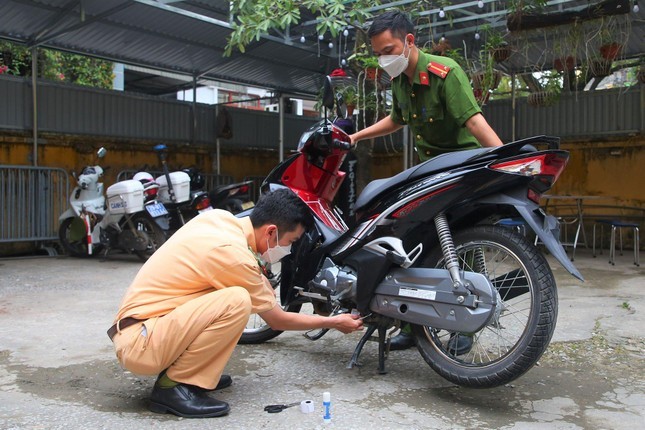
Traffic police inspecting vehicles. Illustration by Thanh Ha.
How to obtain a license plate?
Regarding license plate issuance, according to Circular No. 28/2024/TT-BCA, vehicle owners can obtain their license plates through the Public Service Portal or the National Digital Identity Application. The portal or application will notify the assigned license plate number and provide instructions on paying the vehicle registration fee via text message, email, or notification within the National Digital Identity Application.
After successfully paying the registration fee, the Public Service Portal or the National Digital Identity Application will notify the vehicle owner of the completion of the payment.
The vehicle registration official will then receive, check, and adjust the data of the first-time online vehicle registration from the Public Service Portal or the National Digital Identity Application and transfer it to the vehicle registration and management system. They will also be exempt from physically inspecting the vehicle, verifying the engine and chassis numbers, and taking photos as per the regulations on vehicle registration procedures. Instead, they will print the vehicle registration declaration form, certificate, and other related documents; present them to the competent authority for approval and signature; seal the vehicle registration documents; digitally sign the vehicle registration certificate; and return the results to the Public Service Portal, the National Digital Identity Application, or through the public postal service.
The vehicle registration official will receive the Vehicle Quality Inspection Certificate (with the engine and chassis numbers pasted and cross-signed by the manufacturer) to verify and cross-reference with the data in the vehicle registration and management system. They will then sign to confirm the verification and cross-referencing on the pasted engine and chassis numbers and store the certificate in the vehicle registration file. Finally, they will scan the pasted engine and chassis numbers (from the Vehicle Quality Inspection Certificate) and upload them to the vehicle registration and management system.
The registration and license plate issuance through the National Public Service Portal, the Ministry of Public Security’s Public Service Portal, or the National Digital Identity Application VNeID will be implemented from August 1, 2024.







